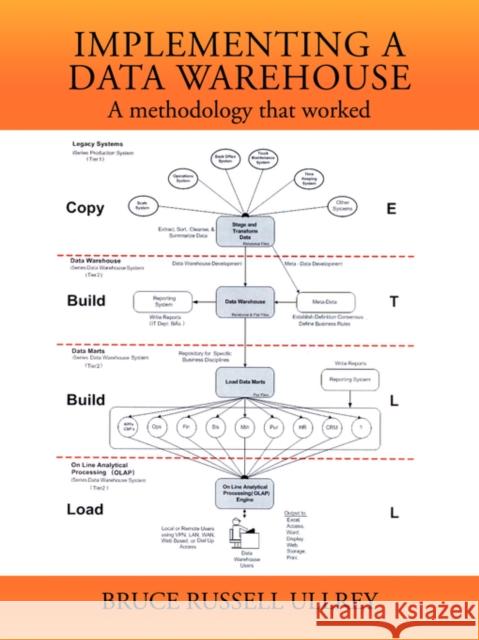Implementing a Data Warehouse: A Methodology That Worked » książka
Implementing a Data Warehouse: A Methodology That Worked
ISBN-13: 9781425991678 / Angielski / Miękka / 2007 / 224 str.
The purpose of this book is to document the methodology and chronology of work activity used by the author to successfully implement a Data Warehouse. Each of the eleven steps of the methodology is reviewed in the book, often using actual working documents as examples. The book contains lessons learned (both good and bad) as well as measures of success for each step. An essential aspect of DW project implementation (and other IT projects as well) is using established business practices to manage development and implementation. Discussion of use of these "due diligence" practices in Step 1 establishes the foundation for starting the DW project with the proper levels of management oversight. Step 2 presents examples of business models necessary for the DW developer to understand the needs of the business that the DW will serve. Other DW books describe the data modeling process but neglect to provide modeling instruction and actual examples to insure that the DW is properly aligned with business needs. An elegant data warehouse that doesn't meet the needs of the business is wasted effort. Step 3 documents and displays the level of detail needed to define CSF's (Critical Success Factors) and KPI's (Key Performance Indicators). If calculations for these important metrics are not defined in detail, and consensus to use them is not reached, then again, the most elegant data warehouse implementation is a wasted effort. In addition, developing and documenting functional requirements is essential in identifying legacy system reporting deficiencies. Step 4 describes how to access and display field level information on the iSeries platform. Actual shots of the resulting screens are shown. Step 5 presents the functional contents of an RFP for a Data Warehousing tool-set. Step 6 presents the progression of work required to build a data warehouse. Step 6 also: A. Describes and displays a hybrid dimensional to flat file data model that may be, in reality, the











